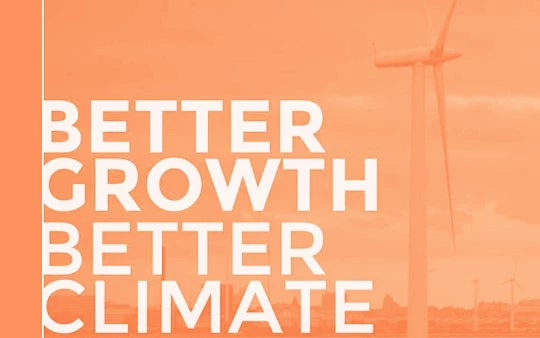
Action is urgently needed on climate change, but it does not have to come at the expense of economic growth. This is the central message of the Global Commission on the Economy and Climate of which I am privileged to be a member.
The
New Climate Economy, a new report released by the commission, reinforces the view that major structural and technological changes in the global economy are now making it possible to achieve both: lower-carbon development and better economic growth.
The report tells us that around US$90 trillion globally will be invested in cities, land use and energy infrastructure between now and 2030. It’s clear that the investment choices we make today will shape future growth and will lock-in either a low or a high carbon pathway.
The report sets out a detailed global action plan of practical recommendations that can achieve greater prosperity and a safer climate at the same time, such as phasing out subsidies for fossil fuels, restoring degraded forest lands and building better connected, more compact cities based on mass public transport.
One of its key recommendations is the introduction of strong, predictable
carbon prices in order to unlock investments and innovations in a low-carbon economy. At the World Bank Group we agree.
A carbon price provides a necessary, if insufficient, signal for investment in low-carbon and resilient growth. Some policymakers may hesitate. However, with an eye on their neighbors, many leaders, faced with compelling economics, are unpacking complex politics around carbon pricing.
Take the European Union and its Emissions Trading System. The EU has been rightly commended for establishing the ETS, but this carbon market is experiencing serious difficulties, partly because the recent recession reduced industrial demand for its tradable permits, but also because the market rules did not include any provision to adjust supply to economic shocks, and politics delayed the necessary rule change.
Other countries and states and provinces are learning from these experiences. The range of countries using carbon pricing shows that it can be done by high income and emerging economies alike.
Today,
almost 40 countries and more than 20 cities, states and provinces use mechanisms such as emissions trading systems and carbon taxes or are preparing to implement them.
China now houses the second largest collection of carbon markets in the world. To date, it has launched seven pilot emissions trading systems in five cities and two provinces. New carbon taxes were introduced in Mexico and France in 2013. The states of Oregon and Washington are exploring carbon pricing options to join California, Québec, and British Columbia in efforts to tackle climate change. South Africa is planning to implement a carbon tax starting in 2016.
At the same time, the private sector has been increasingly outspoken in its support for putting a future price tag on our carbon footprint. Many companies, including house-hold names like Google, Walmart, and Shell, already use shadow pricing in their planning and investments.
Building on this momentum, the World Bank Group is encouraging corporate and government leaders to register their support for the
Put a Price on Carbon statement.
In the statement, governments pledge to work together and companies pledge to work with governments towards the long-term objective of carbon pricing used throughout the global economy.
As the New Climate Economy report and
our reports makes clear, consistent and credible government policy signals are essential for businesses and investors to create jobs, growth and spur innovation.
It is one more voice reminding us that smart policy choices can deliver economic and climate benefits.


Join the Conversation